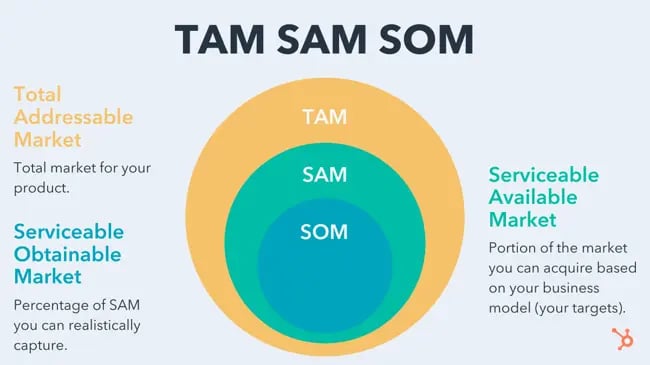As an entrepreneur delving into the world of startups, one of the crucial aspects to comprehend is the concept of the Total Addressable Market (TAM). The total addressable market holds the key to understanding the scope and potential of the market you aim to conquer. Imagine dedicating an immense amount of time, effort, and resources to a startup only to discover that the market is, unfortunately, too small for substantial growth. To avoid this potential pitfall, it becomes essential to gauge the TAM accurately.
Unveiling Total Addressable Market (TAM) – What Is It?
Let’s start by demystifying the term “Total Addressable Market.” In simpler terms, the total addressable market refers to the entirety of the market that your business aims to target. It’s not merely the market share you expect to capture but the holistic opportunity available. While the prospect of securing a 100% market share is typically unrealistic, understanding the TAM offers insights into the true potential of your business within the industry.
Significance of TAM – Why Is It Vital?
Before diving headfirst into any startup venture, comprehending the importance of TAM cannot be overstated. Imagine seeking investment for your startup; potential investors are likely to inquire about your TAM. They need assurance that the market is substantial enough to guarantee a promising return on their investments. This underscores the significance of accurately determining the TAM early in the process.
Calculating the Total Addressable Market (TAM) – Top-Down vs. Bottom-Up Analysis
To effectively determine the TAM, two fundamental approaches are often employed: top-down analysis and bottom-up analysis. Let’s delve into both methods to gain a comprehensive understanding of how to calculate your TAM effectively.
Top-Down Analysis: Slicing Down Market Data to Your Product
A top-down analysis involves leveraging existing market data and narrowing it down to your specific product or service. To illustrate this, let’s consider the example of Vivino, an online platform for selling wine. Suppose the total retail market for wine amounts to a staggering $300 billion. However, as Vivino operates specifically in the online wine retail space, the on-premise sales (e.g., sales in restaurants and bars) comprising 25% of the total sales are excluded. With further refinement, online sales constitute 15% of the remaining market, leading to a TAM of $34 billion for wine sales online.
Bottom-Up Analysis: Estimating Potential Buyers and Market Penetration
Conversely, a bottom-up analysis is employed when there is limited market data available, especially for a new product or market. This approach entails estimating the potential buyers and their estimated spending. Let’s consider the case of Q Pilot, a specialized product for producing live television events. By estimating the potential number of clients, multiplying it with the estimated spending per client, and factoring in the market size for each region, a TAM of approximately $29 million is derived for Q Pilot.
Adapting to the TAM Insights – Pivoting Strategies for Success
Understanding the TAM often leads to critical insights that can influence business strategies. Realizing the potential constraints or opportunities within your TAM can prompt necessary pivots or adaptations. For instance, a company may opt to broaden its product appeal to target a larger market or explore the possibility of adjusting the pricing strategy to expand its TAM.
Conclusion: Harnessing TAM for Startup Success
In the competitive landscape of startups, having a clear grasp of the Total Addressable Market is indispensable. Whether it’s fine-tuning your market approach, adapting your product offerings, or re-evaluating your growth strategies, the TAM serves as a guiding beacon for startups to navigate the tumultuous journey of entrepreneurship.
Always remember, understanding the TAM and its implications can be the differentiating factor between a successful venture and a missed opportunity.

